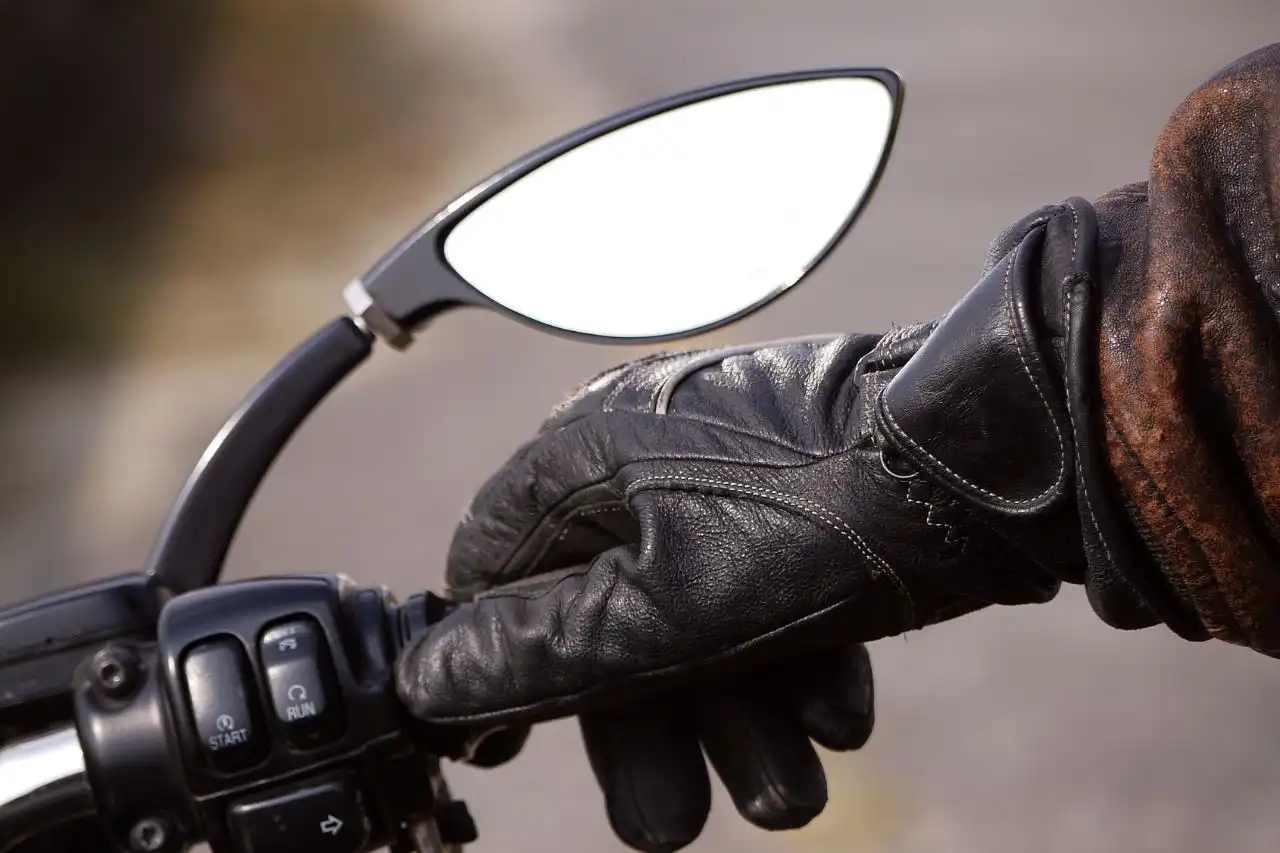Imagine yourself, a seasoned rider, traversing the picturesque landscape on your beloved motorcycle. The engine’s symphony is playing in harmony with the wind’s melody as you ride into the sunset. Suddenly, your motorcycle begins to sputter, the throttle seems unresponsive, and your journey towards the horizon is interrupted by a sticking throttle cable. It can be as annoying as a bee in your helmet, but fear not, for we are here to guide you on the path to troubleshoot this mechanical hiccup.
Just as a skilled sailor navigates through a storm, a motorcycle enthusiast must know how to weather mechanical storms. The sticking throttle cable, a common issue, often disrupts smooth journeys. But fear not, fair rider, for this problem is as surmountable as the tallest peak. Let us delve into the heart of the matter and untangle this complex issue.
Identifying the Problem
It all starts just as a shiver runs down your spine. You sense an unnatural resistance when you twist the throttle, and it doesn’t return smoothly to its natural position. This, my dear reader, is the dragon we must slay – the sticking throttle cable.
What Causes a Throttle Cable to Stick?
Understanding the root cause of a sticking throttle cable can be likened to diagnosing the reason a sunflower doesn’t bloom. It’s a complex process, a confluence of various factors. So, let’s delve into the labyrinth of possibilities that can cause your motorcycle throttle cable to stick.
1. Cable Contamination
Just as the sunflower’s growth can be stunted by invading pests, so too can your throttle cable’s smooth operation be hindered by grime and dust invasion. Over time, dirt, dust, and other contaminants can accumulate within the cable, causing it to stick. This is especially true if the motorcycle is frequently ridden in harsh or dirty environments.
It’s a silent invasion, one that slowly but surely affects the throttle cable’s operation without your immediate knowledge, much like termites gnawing away at a wooden foundation.
2. Cable Friction
Imagine a sunflower attempting to grow in a field of thorny bushes. The friction would hinder its development, wouldn’t it? Similarly, if the throttle cable is improperly routed, it can rub against parts of the motorcycle, increasing friction. This friction, over time, can cause the cable to stick.
3. Lack of Lubrication
Just as a sunflower needs water to bloom, your throttle cable needs lubrication to function smoothly. Without proper lubrication, the cable can dry out, leading to increased friction and, eventually, a sticking throttle cable.
Picture this as a parched riverbed in the midst of a drought – the lack of water hampers the river’s flow, much like the lack of lubrication impedes the throttle cable’s movement.
4. Damaged Components
Consider the effect of a broken stem on a sunflower; it can’t possibly stand tall and bloom, can it? A similar scenario is applicable to your throttle cable. If the cable or its associated components are damaged, it can result in a sticking throttle.
| Possible Cause | Description |
|---|---|
| Cable Contamination | Accumulation of dirt, dust and other contaminants within the cable. |
| Cable Friction | Improper routing leading to the cable rubbing against parts of the motorcycle. |
| Lack of Lubrication | Insufficient lubrication leading to increased friction and stickiness. |
| Damaged Components | Damage to the cable or its associated components impairing its function. |
5. Wear and Tear
As our journey through the mechanical realm of motorcycles continues, we find ourselves at the station of ‘Wear and Tear’, a phenomenon as inevitable as the sunrise. Just as the hands of time etch their wrinkles on our faces, they also leave their marks on the throttle cables of our beloved two-wheelers.
Every time you twist the throttle, it’s akin to the rhythmic beating of a heart. The throttle cable dances to the tunes of your command, contracting and expanding, allowing your motorcycle to breathe life into its engine. But much like the human heart, prolonged use and age can take a toll on this essential component, leading to wear and tear.
Wear and Tear are the silent predators lurking in the shadows of a motorcycle’s lifespan. They creep up slowly, gnawing at the vitality of your throttle cable, often going unnoticed until the symptoms become too severe to ignore.
Indeed, wear and tear are the inevitable monsters that every motorcyclist must face. But armed with knowledge and vigilance, one can keep these beasts at bay, ensuring a smooth ride for many miles to come.
- Friction: One of the prime culprits behind wear and tear is friction. As the throttle cable moves back and forth, it rubs against the inner housing, gradually causing it to fray and degrade.
- Corrosion: Over time, moisture and other corrosive elements can infiltrate the throttle cable, leading to rust and ultimately weakening the cable’s structure and performance.
We may not possess the power to halt the forward march of time, but we are not entirely helpless. By understanding the causes behind wear and tear, we can take preemptive measures, thus ensuring the longevity of our throttle cables and the integrity of our rides.
| Cause | Impact | Preventive Measure |
|---|---|---|
| Friction | Gradual degradation of the throttle cable | Regular lubrication |
| Corrosion | Weakening of cable structure | Use of rust inhibitors and regular maintenance |
Thus, dear rider, we find that the beast of wear and tear, although menacing, is not invincible. With a careful eye and diligent maintenance, we can keep our throttle cables in prime condition, ensuring a seamless communion between man and machine, mile after glorious mile.
6. Dirt and Grime
Like an unwelcome guest at a grand feast, dirt and grime can sneak into the most sophisticated systems, causing havoc and disarray. In the world of motorcycles, the throttle cable, a pivotal player in the symphony of mechanical precision, is particularly vulnerable to such intrusions.
The relentless journey of a motorcycle often leads it through landscapes steeped in dust, grit, and grime. As the throttle cable weaves its way through this ever-changing tapestry of elements, it is often subject to unwanted particles that can stick to its surface, causing it to stick and stutter in its function.
Imagine a beautifully tuned violin string, taught and ready to sing at the slightest touch, suddenly finding itself laden with dust and dirt. The melody changes, the harmony is lost, and the once smooth performance becomes a laborious effort. A throttle cable, imbued with grime, behaves in much the same manner.
Dirty throttle cables can manifest in a variety of symptoms. Let us delve into a deeper understanding of this issue with the help of a table.
| Symptom | Possible Cause |
|---|---|
| Sticking throttle | Grime build-up inside the cable |
| Irregular acceleration | Uneven dirt accumulation causing inconsistent movement |
| Sluggish throttle response | Dirt creating friction inside the cable |
But fear not, for every problem has a solution. The cleaning and maintenance of the throttle cable can significantly mitigate this issue. It may seem like an arduous task but broken down into manageable steps, it can be an empowering exercise in self-sufficiency.
As you journey with your motorcycle, remember, it is not just about the destination, but the care and attention you give to your ride along the way. Like a faithful steed, it will serve you well if you treat it with the respect and diligence it deserves.
7. Improper Lubrication
Before embarking on this journey of mending the artery of your mechanical steed, it’s essential to understand the role and importance of the throttle cable. Like the reins in a horseman’s hand, the throttle cable is the conduit of control, the translator of your desire for speed into the heart of your bike – the engine. When it is sticking, it’s akin to a horse not responding to its rider’s commands, leading to a less than smooth riding experience, and can even pose a safety risk.
“A sticking throttle cable isn’t just a minor inconvenience, but a whisper of rebellion from your trusty steed, a sign of potential hazard that demands your attention.”
The throttle cable is a simple yet vital component of your motorcycle. It is a steel braided cable that connects your throttle grip to the carburetor or throttle body. When you twist the throttle, the cable pulls open the throttle plate, allowing more air and fuel into the engine, roaring it to life and speed.
A sticking throttle cable simply means that the cable does not retract smoothly when you let go of the throttle. This could be due to a variety of reasons:
- Wear and tear over time, causing the cable to fray
- Improper maintenance, leading to the cable becoming dry or rusted
- Incorrect routing of the cable, causing it to kink or bind
Each of these causes can make the throttle stick, either in an open or closed position. Your ride becomes unpredictable, like a wild horse refusing to be tamed. But fear not, for in the following sections, we will guide you on the journey to diagnose and fix this issue, ensuring that your mechanical steed remains as loyal and responsive as ever.
Symptoms of a Sticking Throttle Cable
Just as the morning dew clings to the leaves of a freshly sprung flower on the cusp of a new day, symptoms of a sticking throttle cable in your beloved two-wheeler can manifest themselves subtly but surely. Let’s meander through this landscape, observing the tell-tale signs that may point towards a throttle cable that has become the proverbial ‘stuck cog’ in your mechanical symphony.
- Unresponsive Throttle: Like a dog tethered too tightly to a post, your motorcycle’s throttle may seem unresponsive. You twist it, but the engine does not respond with the verve and vigour you have come to expect.
- Sticky Throttle Grip: Picture this – you’re attempting to slide a letter through a mail slot that’s just too narrow. It’s frustrating, right? That’s what a sticky throttle grip feels like. The grip doesn’t return to its original position as smoothly as it should.
- Erratic Idle Speed: Imagine a ship at sea, tossed around by the whims of the ocean’s current, not entirely under the control of its captain. An erratic idle speed is similar – your motorcycle’s idle speed fluctuates, indicating a throttle cable that’s sticking.
Remember, just as a skilled hunter reads the signs left by his quarry in the wilderness, so too must you become adept at recognising these symptoms. Only then can you address the issue at its root, restoring your motorcycle to its former glory.
Before the sun bakes the morning dew away, let’s take a moment to understand what causes these symptoms, this uninvited guest at your motorcycle maintenance table.
Tools and Materials Needed to Fix a Sticking Throttle Cable
The orchestra of the open road, a melodious blend of wind, engine’s purr, and the rhythmic dance between rider and machine, can be disrupted by a sticking throttle cable. This issue, akin to a sour note in a symphony, can transform the joyous ride into a jarring ordeal. But fear not, noble riders of iron horses, for this article shall guide you to rectify this bothersome issue. Let’s first gather the tools and materials you’ll need for this symphony of repair.
- Replacement Throttle Cable: Like a conductor’s baton, the throttle cable is the heart and soul of your motorcycle’s throttle control. It’s a long, thin, flexible metal cable that connects the throttle grip to the engine’s throttle body or carburetor. When the throttle is twisted, the cable pulls open the throttle body, increasing the amount of air flowing into the engine, and thus, increasing speed.
- Wrenches and Screwdrivers: These are your instruments in this mechanical symphony. Like a pianist’s nimble fingers on the ivory keys, you’ll need these tools to loosen and tighten the various screws and bolts that hold the throttle assembly together.
- Lubricating Oil: Just as violins need bow rosin for seamless play, your throttle cable needs lubricating oil for smooth operation. The lubricant reduces friction between the cable and its housing, ensuring a smooth and responsive throttle action.
- Cleaning Solvent: This is your eraser, wiping away the grime and dirt that can cause the throttle cable to stick. It is used to clean the inner and outer parts of the throttle assembly and the cable itself before applying the lubricant.
With these in your arsenal, the issue of a sticking throttle cable shall be a thing of the past. Remember, just as an orchestra requires all of its instruments to perform in harmony, your motorcycle needs all of its parts to function seamlessly together. The throttle cable, albeit small, plays a critical role in this harmony, and maintaining it ensures the sweet symphony of the open road continues unabated.
Step-by-Step Guide: How to Fix a Sticking Throttle Cable
As the sun dips below the horizon, your motorcycle, your steel steed, whispers tales of adventure. But alas! The throttle cable, the very veins of your mechanical beast, is sticking. Your journey, it seems, is threatened by this mechanical malady. Fear not, for this guide, a treasure map in the labyrinth of motorcycle maintenance, will help you navigate this predicament.
With the unwavering patience of a seasoned mechanic, the deftness of a skilled surgeon, and the guidance of this detailed roadmap, you shall soon restore your motorcycle to its former glory. Let us embark on this journey of restoration.
Step 1: Identification
First, like a healer diagnosing an ailment, you must identify the problem. The throttle cable, a slender serpent, may become sticky due to a lack of lubrication, damage, or wear and tear over countless rides.
Step 2: Acquisition of Tools
Next, arm yourself with the necessary tools. Like an artist prepares his brush and palette, you will need:
- A new throttle cable (if the old one is damaged)
- Throttle cable lubricant
- Wrench set
- Screwdrivers
With these in your arsenal, you are ready to face the challenge head-on.
Step 3: Removal of the Old Cable
Now, like a snake sheds its old skin, you must remove the old throttle cable. Use your wrench and screwdriver to disconnect the cable from both the throttle and the engine.
Step 4: Installation and Lubrication
If replacing the throttle cable, install the new one now. Whether it’s a new cable or the old one, lubricate it generously. Like a parched traveler quenches his thirst, the cable absorbs the lubricant, freeing it of its stickiness.
Step 5: Reconnection
Finally, like reconnecting severed ties, reattach the throttle cable to the throttle and engine. Your motorcycle, rejuvenated, is ready to hit the road again.
Remember, dear reader, these repairs, like all things worthwhile, demand patience and precision. Though this task may seem daunting, the result, a smoothly functioning motorcycle, is a reward in itself. Let this guide be your compass, leading you through the terrain of motorcycle maintenance.
When to Replace a Throttle Cable
As the seasons of use roll on, like waves upon the shore, your motorcycle’s throttle cable may start to present signs of wear and tear. Like a tired old horse, it won’t perform as it once did in its prime. The response might become sluggish, or you might notice a sticking sensation when you twist the throttle. These, dear reader, are the telltale signs that your throttle cable might be due for a replacement.
Warning Signs to Be Aware Of
- Difficulty in Acceleration: This could be your first indication of a problem. It’s akin to trying to run through deep sand; you’re giving it your all, but progress is sluggish.
- Sticking Throttle: This issue can be as alarming as a snake in your boot. It’s when your throttle refuses to smoothly return to its idle position after being engaged.
- Inconsistent Response: This could be described as a kind of capricious behavior from your throttle, it responds well one moment and poorly the next, as unpredictable as a summer storm.
These symptoms might be indicative of a frayed or sticky throttle cable. We often push our trusty steeds to their limits, and over time, the throttle cable can wear out, much like an old pair of boots. The inner cable wire can fray due to friction and the outer cable sleeve can corrode or crack. This can lead to unnecessary resistance when the throttle is engaged, causing it to stick or respond inconsistently.
Remember, a healthy throttle cable is as important to your motorcycle’s performance as a good pair of reins is to a horse rider. Neglecting it can lead to serious performance issues and even potential safety hazards.
Preventing Throttle Cable Issues in the Future
Prevention, they say, is better than cure. Regular maintenance can prevent the throttle cable from sticking, saving you from the trouble of fixing it. It’s like maintaining a garden, pruning the bushes, watering the plants, and preventing the weeds from taking over.
- Regular Cleaning: Just like you wash your motorcycle to keep it shiny, clean the throttle cable to keep it functioning smoothly.
- Periodic Lubrication: Do not wait for the throttle cable to start sticking before you lubricate it. Make it a part of your regular maintenance routine.
- Timely Replacement: Everything has a lifespan, and so does your throttle cable. Replace it before it starts causing problems.
So, next time your motorcycle disobeys you, remember, it might be the throttle cable crying out for help. Listen to it, understand it, and fix it. Keep the dance between man and machine going, keep the symphony playing.
Conclusion
In the grand theater of life, your motorcycle is not just a machine, but a companion, a partner in your journey. When it cries out in distress, it’s your duty to attend to it, to fix it. A sticking throttle cable can be a minor hiccup in your beautiful journey, but with the right knowledge and tools, it can be fixed. It’s like a flat tire on a long road, a small bump that can be overcome. Remember, every problem has a solution, every discordant note can be tuned, and every dance can continue. So, let the dance go on, let the wheels keep turning, and let the journey continue.






